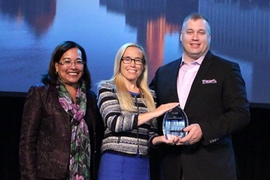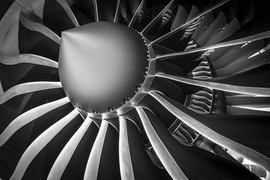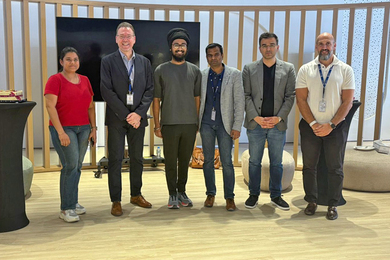Additive manufacturing (AM), also known as 3-D printing, is poised to transform product design, manufacturing, and maintenance. However, limited knowledge of the fundamental principles, applications, and business implications of AM is a barrier to its broad and rapid adoption. To help professionals and organizations realize AM’s potential and accelerate its use, MIT and Boeing are collaborating on a new online course for professionals: Additive Manufacturing for Innovative Design and Production.
This nine-week online course explores the transformational capabilities of AM in the design, production, and service of products, and investigates its implications in restructuring production workflows and lowering manufacturing costs. Geared towards industry professionals, the new course teaches critical skills that prepare employees to implement AM in their organizations. The course explains leading AM technologies for polymers, metals, and advanced materials; addresses design for AM via both engineering principles and computational design; and includes quantitative models for assessing the cost and value of components made by AM.
The MIT-Boeing collaboration in AM education is motivated by the need to scale learning and communicate its potential as a transformative mechanism in the design of parts and products, the definition of their performance, and the ways 3-D printing can increase productivity in manufacturing operations. This applies to aerospace and potentially to any industry involved in the design and manufacture of physical products. The course curriculum reflects AM’s widespread applicability across industries.
Mike Vander Wel, a production engineering chief engineer at Boeing, says the company has been involved in AM for nearly three decades, and now uses it to prototype, test, and manufacture small parts for some aircraft. Spurred by the expiration of key patents, availability of advanced digital modeling software, and improved hardware, 3-D printing is on the verge of use as a mainstream production technology. Improvements in its accessibility combined with persistent advances in the performance of AM machines and materials are prompting innovation in 3-D printing and exponentially increasing its adoption.
While new graduates are entering the workforce with a basic knowledge of AM technology, many seasoned employees have little or no exposure to it. The MIT-Boeing collaboration was designed to jumpstart career learners on AM processes, applications, and analyses — at scale. Aside from its bottom-line benefits, MIT and Boeing view AM as an opportunity to improve job satisfaction as well. “To me, accomplishment equates to job satisfaction,” says Vander Wel. “Upon completion of the course, learners will be able to develop additive applications and work collaboratively to solve problems, which will be deeply gratifying.”
In many ways, AM is already affecting Boeing’s production activities across the entire product workflow. Some parts begin as printed prototypes for form and fit testing, and finished parts are often installed using jigs and fixtures optimized to perform jobs more easily. For actual production, mold tooling might be printed and used, and flyaway parts, including the 3-D-printed structural titanium galley fitting on the 787 Dreamliner, are now made at reduced cost and weight with improved performance.
“Additive manufacturing already has important implications throughout the product life cycle, yet, most importantly, we can now envision its use as a mainstream production technique. This compels us to accelerate our understanding of the unique advantages of AM, and rethink how we design new parts and products, and the metrics by which we define their importance,” says the course director, John Hart, associate professor of mechanical engineering at MIT and director of the MIT Laboratory for Manufacturing and Productivity.
Workplace safety has promoted AM adoption at Boeing, illustrated by the simple example of safety clips for rollers located in the belly of aircraft. The rollers are used to load and unload cargo and can present a slip hazard for mechanics who work on and around them. Using AM, the mechanics team created a clip to cover the cylinders in place and prevent them from rolling. Over a five-day period, engineers rapidly iterated the design until the clips were perfected. Currently, they are used in production and have significantly reduced the number of on-the-job injuries.
Additive Manufacturing for Innovative Design and Production brings together the best of MIT faculty and industry experts in a world-class program. Using advanced digital design, modeling, and visualization tools, the 9-week course, which runs on the edX platform, combines technical knowledge with strategies for implementing and evaluating new product designs and operational practices using AM. The course capstone activity is an in-depth case study, which is an opportunity for students to apply their newly acquired technical and strategic knowledge of AM to a real-world problem. With an intense focus on applied knowledge and practical solutions, the curriculum prepares students to deploy and manage innovative uses of AM.
“Our educational collaboration with MIT encourages employees to grow professionally and develop new manufacturing skills,” says Michael Richey, chief learning scientist at Boeing. “Through a combination of industry and academic expertise, the additive manufacturing curriculum will equip employees with knowledge of the fundamentals of 3-D printing, which has the potential to catalyze widespread change across the manufacturing industry.”
The Additive Manufacturing for Innovative Design and Production course starts April 30. For additional information, visit the course website.









